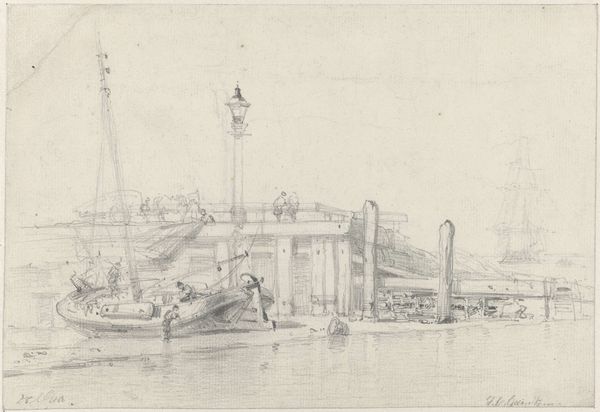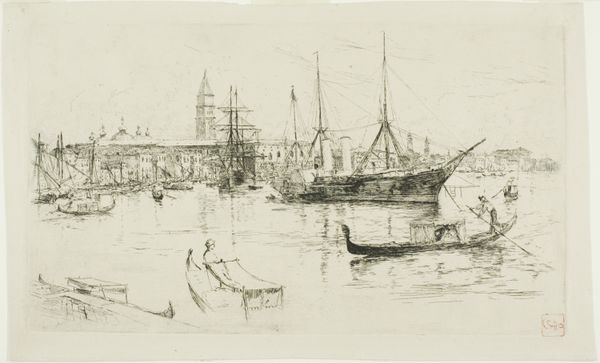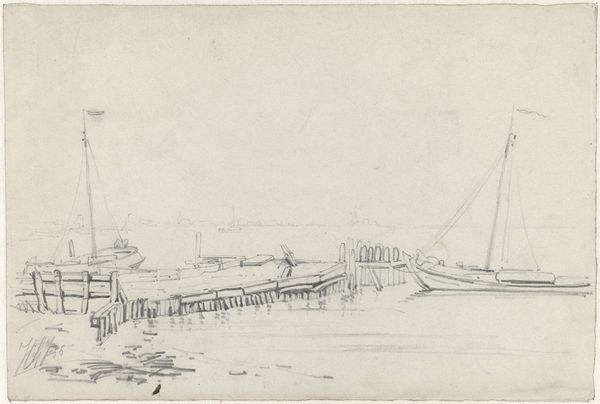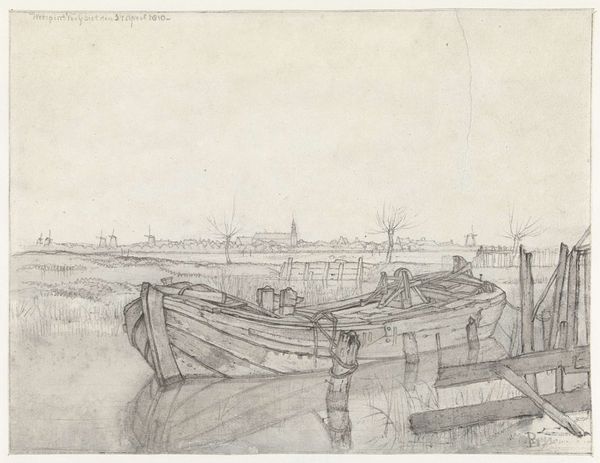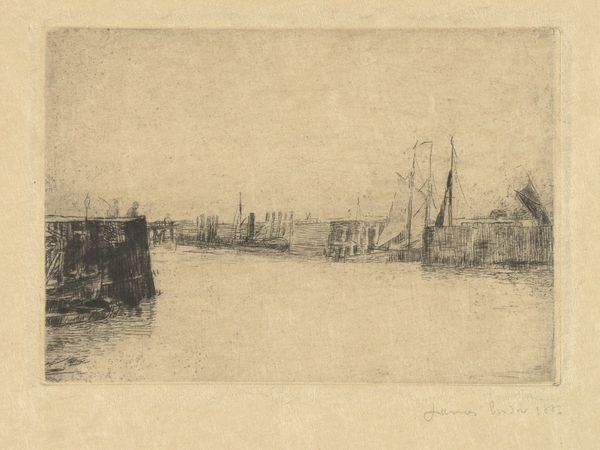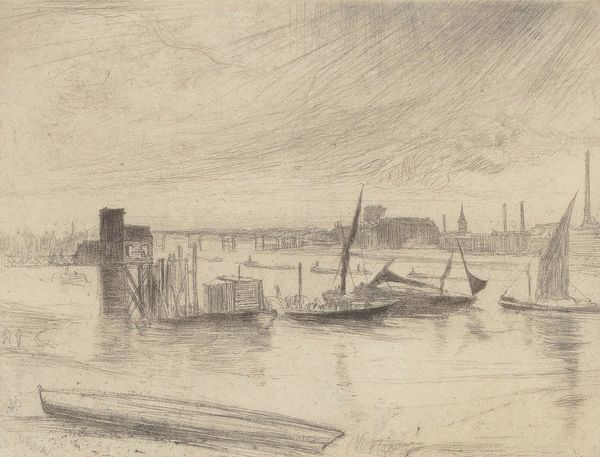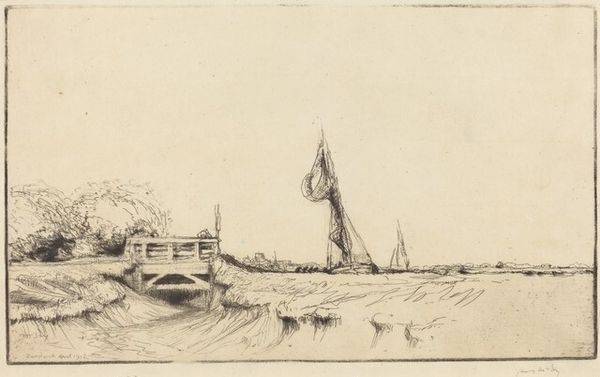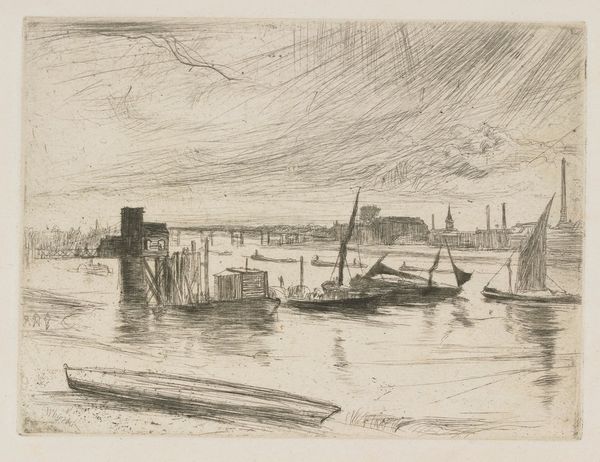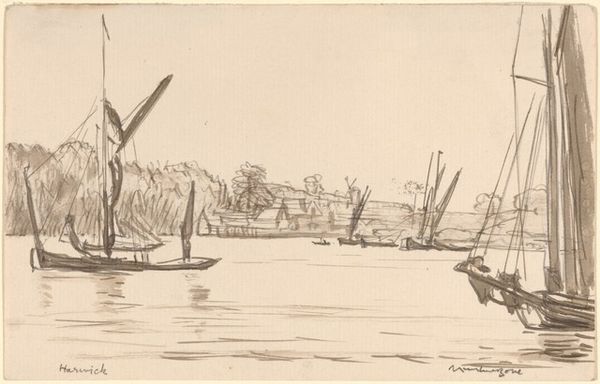
drawing, pencil
#
drawing
#
impressionism
#
pencil sketch
#
landscape
#
etching
#
pencil
#
cityscape
Copyright: Public Domain: Artvee
Curator: Whistler’s 1878 pencil drawing, "The Broad Bridge," strikes me immediately as stark and melancholy. It feels incredibly muted and linear, like a fleeting observation captured just before a downpour. Editor: It's tempting to focus on that somber atmosphere, but I find myself drawn to the structural arrangement first. Note how the bridge piers create a proscenium arch effect, framing a distant vista, layering space upon space. Curator: You're right. The geometry is undeniably compelling. The contrast between the solid, almost brutalist piers and the hazy background certainly creates depth and visual tension, evoking the Industrial age, right? It’s all chimneys and factories barely visible. Editor: Precisely, that industrial backdrop speaks volumes about London's social landscape at the time. Think about the working class communities dependent on those factories and the waterways they navigate. Whistler chose this view, in a neighborhood where he had a studio. This wasn't a neutral scene. Curator: Indeed. Whistler deliberately obscures the faces and individuality of the figures in the boat, focusing our attention on their activity. The horizontal movement contrasts beautifully with the verticality of the pier. Tell me, what about his tonal range in that foreground draws your eye? Editor: His delicate shading in the water reflects light up into the bridge's supports. That textural depth contrasts to the more rigidly geometrical structure of the pillars. It suggests not only materiality but how time, erosion and the elements sculpt our built environment. Curator: Very insightful! We see that he worked to emphasize specific aspects, inviting viewers to contemplate our position relative to our own urban landscape and the changing face of modernity. The work suggests movement away from tradition into modernity with a bittersweet eye. Editor: Absolutely. Whistler provides more than just visual aesthetics; his drawings encourage critical thinking about ourselves, the spaces we occupy, and the sociopolitical undercurrents defining our collective existence. It's art as social commentary, delicately rendered.
Comments
No comments
Be the first to comment and join the conversation on the ultimate creative platform.

